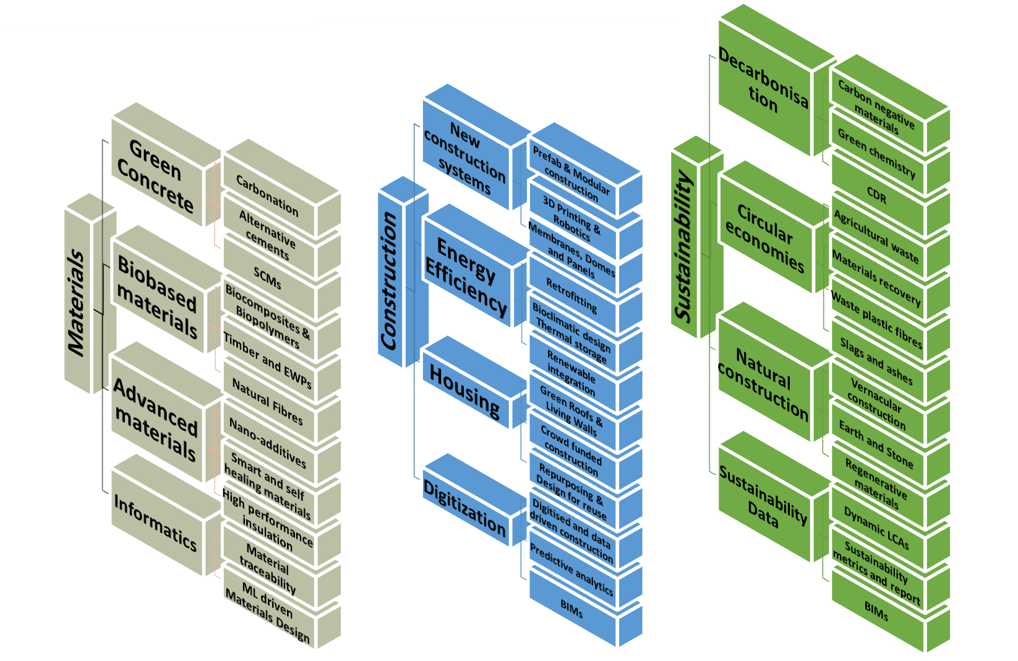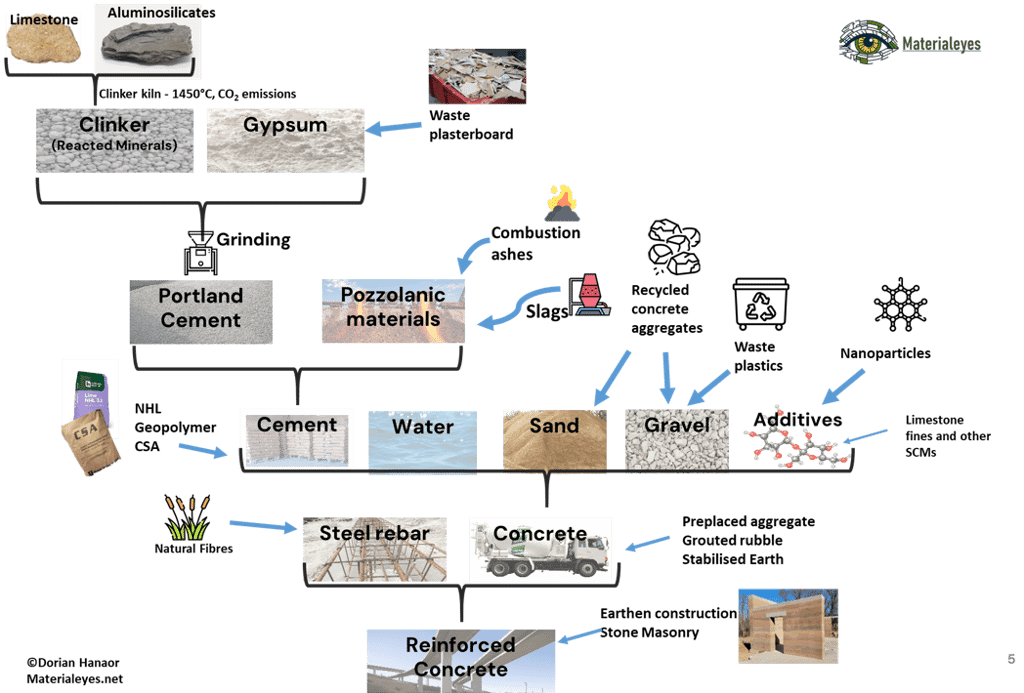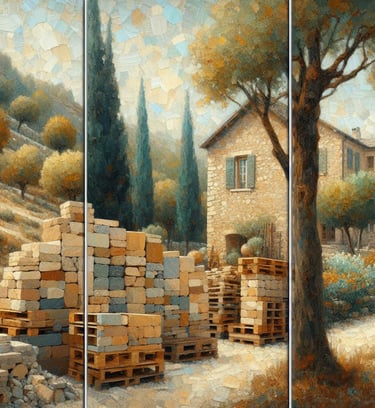Concrete, the most widely used substance after water, has become astonishingly central to the way we create built environments around the globe. The volume of natural resources that goes into the production of concrete is by far the largest stream in the entire materials sector. The bulk of the extracted materials that go into concrete are for the aggregate component, including rubble, gravel and sand. A significant volume of argillaceous (containing aluminosilicates) and calcareous (containing calcium) minerals are extracted to produce portland cement, the backbone of modern concrete. It is predominantly owing to the production of portland cement that the concrete industry accounts for roughly 8% of current green house gas emissions and poses a considerable decarbonisation challenge. Nevertheless there are tremendous opportunities for new and re-imagined technologies to provide new pathways for the production of sustainable concretes, that provide a more harmonious interface between the lithosphere and the human sphere of activities, responsibly harnessing and utilising the Earth's mineral bounty and working in alliance with the atmosphere to produce a beautiful and enjoyable human experience in the built environment.
Mineralization pathways including carbonation of silicates and hydroxides, and the use of lime based binders can produce masonry and castable concretes that are amply adequate for creative residential construction, with drastic reductions in the overall carbon balance. The use of metallurgical slags, ashes from fuel or waste combustion, calcined clay overburdens or other pozzolanic materials as supplementary cementitious materials (SCMs) in can further greatly reduce the volume of portland clinker required to produce cement. By integrating grinding technologies and machine-learning empowered application-oriented optimisation of feedstocks and processing parameters recycled concrete and limestone fines can further be harnessed to further reduce clinker requirements.


















